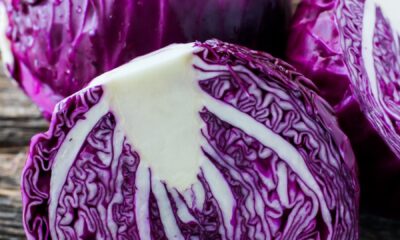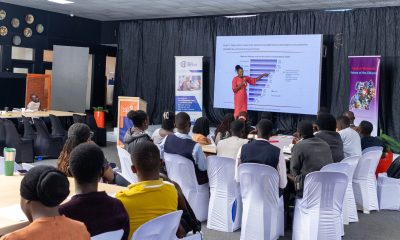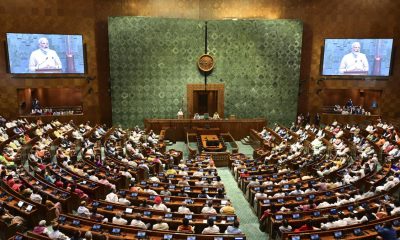Analysis
Why Uganda is losing billions in imported poultry feeds

Uganda loosing billions in imported animal feeds
In a globalised world, no country can be self-sufficient in everything. However, there are strategic industries such as food that countries like Uganda which are dollar-strapped, must endeavour to protect not only for the sake of ensuring food security but also for reasons of economic stability, national sovereignty and pride. Indeed this is the logic behind the import substitution efforts espoused by many governments.
This is not to mention the fact that countries like Uganda enjoy enormous advantages in producing food and feed more cheaply compared to many other countries especially in the Great lakes region, thanks to the favourable weather and large chunks of arable land.
Over the past few years, however, Uganda’s advantage in producing poultry and animal feeds has been slipping out of her hands, with the knowledge of the economic managers.
To put it in perspective, the value of premixes (ingredients used in preparing animal feeds) tripled between 2016/17 and 2017/18 financial years from US$6 million to US$17.7m, according to data provided by the Uganda Bureau of Statistics (UBOS) upon request by The Sunrise.
And although over the same period, the government reintroduced import taxes on premixes, this has done little to slow down the rate at which importers are taking advantage of the growing demand for concentrates as ingredients used in poultry and animal feeds.
The biggest beneficiaries of this changing trade pattern in the production of animal and poultry feeds are European countries such as The Netherlands, Belgium, France, the United Kingdom and Germany. A few other countries from Africa such as South Africa, from the Indian Sub-continent such as India, and from Asia and South America are increasing their share of the Ugandan market for animal feeds.
Why the shift?
Testimonies obtained from a number of poultry farmers who spoke with The Sunrise confirm the fact that they are increasingly shifting from using locally-produced inputs in favour of imported ones.
Betty Nankumba, a poultry farmer in Kitende, Wakiso district argues that they have shifted to imported concentrates because they are standardised ingredients, and only require broken maize or maize bran as the other input that a farmer has to look for.
“Previously, we struggled with access to quality inputs such as good fish, cotton and several other inputs. This meant spending a lot of time in Kisenyi looking for the ingredients and then bran. Often, we would get substandard feed that is infested with aflatoxin, or filled with sand. Now, all you need is maize and maize bran, the rest is provided in standardised concentrate feeds,” says Nankumba.
Idris Lule, another prominent poultry farmer in Namasuba Lufuka zone agrees that standardisation of inputs was a major factor in his decision to shift because it allows him to have a clear calculations in his business.
For many years, farmers depended on silver fish (Mukene) as the primary source of protein for feeds. Competition for Mukene from humans and declining supply from the lakes, however, led to a spike in prices of the commodity and made it economically unviable to use fish as a source of protein in poultry and animal feeds.
In the meantime, industrialised European countries, many of which are big producers of feed, realised the opportunity and started to import ‘concentrates’ or ready to use balanced ingredients which farmers just buy and mix with locally sourced maize/maize bran to feed their birds and cattle.
A close observant will notice the mushrooming of outlets that sell ‘concentrates’ in Kampala and other urban areas of Uganda.
Peter WambogaMugirya, the Director of Communications at the Science Foundation for Livelihoods and Development (SCIFODE), argues that shift from fish to soybeans would only be good if the country was not losing hard-earned dollars to developed countries.
“This trend can only be good and welcome if the soy-meal/feeds are sourced from Ugandan farmers not imports. Uganda’s potential to grow and produce large amounts of soybeans is huge,” says Wamboga.
Cheaper soybeans abroad
The increased production of soybeans in the developed world thanks largely due to the adoption of modern biotechnology particularly genetic engineering, coupled with mechanisation and better farmer organisation has led to increased production of the crop that forms the biggest source of proteins in feed.
With low-cost production, countries, especially in Europe which do not grow the crop, are able to access it more cheaply and increase its usage in the food and feed sector.
According to a report by the Food and Agricultural Organisation (FAO), Soybean production has increased by more than 11% over the past decade thanks to modern science of genetic engineering that allows farmers to use herbicides in weeding and address other challenges such as removing allergens in the crop.
Research by scientists at Makerere University has helped to improve Uganda’s soybean production by addressing problems such as soybean rust disease and the pod bust challenge has helped to increase production to about 180,000 metric tones per year.
However rising demand for the product locally, has exceeded supply resulting into higher prices.
Despite rising production, the cost of producing soybeans in Uganda remains higher compared to other countries such as Brazil, the US and Argentina.
Still, the loss of millions of dollars in imported concentrates to already developed countries especially in such a low-tech manufacturing industry is a major source of concern on the part of Ugandan policy makers.
Geoffrey Nviiri, a poultry researcher working with the National Agricultural Research Organisation (NARO) argues that whereas producing concentrates in Uganda is not desirable but also possible, the prevailing high cost of doing business in Uganda is a major hindrance to any prospective investor.
Nviiri argues that although investors would want to venture into this sector, difficulties in importing equipment, the cost of electricity complicate the process and discourage them.
Going forward, while the government strives to make strides in higher sciences such as building solar-powered vehicles, ignoring ordinary sectors such as food and feed is proving to be too costly.
Comments


























